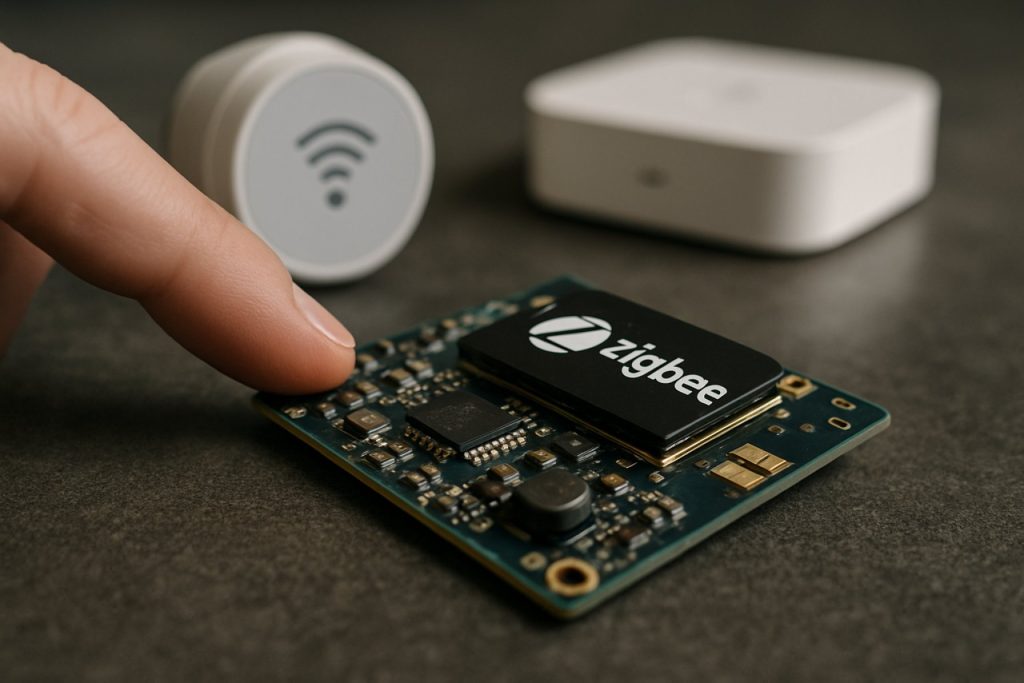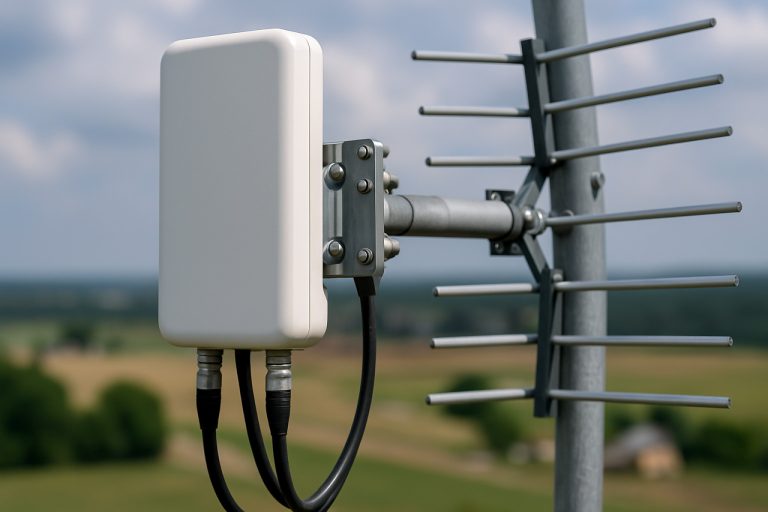
Unlocking the Full Potential of Zigbee: Advanced Strategies for Protocol Stack Optimization. Discover how cutting-edge optimizations are transforming Zigbee networks for faster, smarter, and more reliable IoT connectivity.
- Introduction to Zigbee and Its Protocol Stack
- Why Optimize? The Business and Technical Imperatives
- Core Challenges in Zigbee Stack Performance
- Layer-by-Layer Optimization Techniques
- Reducing Latency and Power Consumption
- Security Enhancements Without Compromising Speed
- Case Studies: Real-World Zigbee Optimization Successes
- Best Practices for Developers and Network Engineers
- Future Trends: AI and Automation in Zigbee Stack Optimization
- Conclusion: The Road Ahead for Zigbee in Next-Gen IoT
- Sources & References
Introduction to Zigbee and Its Protocol Stack
Zigbee is a widely adopted wireless communication protocol designed for low-power, low-data-rate applications such as smart home automation, industrial monitoring, and sensor networks. Its protocol stack is structured into several layers, including the Physical (PHY), Medium Access Control (MAC), Network (NWK), and Application (APL) layers, each responsible for specific communication and management tasks. The efficiency and performance of Zigbee-based systems are heavily influenced by how well this protocol stack is optimized, as resource constraints in typical Zigbee devices—such as limited memory, processing power, and battery life—demand careful balancing of functionality and overhead.
Optimizing the Zigbee protocol stack involves refining each layer to reduce latency, minimize energy consumption, and enhance network scalability and reliability. For instance, improvements in the MAC layer can lead to more efficient channel access and reduced collision rates, while network layer optimizations can streamline routing and address management, crucial for large-scale deployments. Additionally, application layer enhancements can enable more responsive and robust device interactions. These optimizations are essential for meeting the evolving requirements of the Internet of Things (IoT), where dense device deployments and real-time responsiveness are increasingly common.
Recent advancements and standardization efforts by organizations such as the Connectivity Standards Alliance have focused on stack enhancements to support interoperability, security, and over-the-air updates. As Zigbee continues to evolve, protocol stack optimization remains a critical area of research and development, ensuring that Zigbee networks can deliver reliable, scalable, and energy-efficient solutions for a wide range of applications.
Why Optimize? The Business and Technical Imperatives
Optimizing the Zigbee protocol stack is crucial for both business and technical reasons, especially as the Internet of Things (IoT) ecosystem expands. From a business perspective, efficient Zigbee stack performance directly impacts product competitiveness. Devices with optimized stacks offer longer battery life, faster response times, and greater reliability—key differentiators in markets such as smart home automation, industrial monitoring, and healthcare. Reduced power consumption and improved network scalability can lower operational costs and extend device lifespans, translating into tangible savings and enhanced customer satisfaction. Furthermore, streamlined stacks can accelerate time-to-market by simplifying certification processes and reducing the need for extensive troubleshooting or post-deployment updates.
On the technical front, Zigbee networks often operate in resource-constrained environments, where memory, processing power, and energy are limited. Optimizing the protocol stack minimizes overhead, reduces latency, and ensures robust communication even in dense or interference-prone deployments. This is particularly important for large-scale sensor networks, where inefficient stack implementations can lead to congestion, packet loss, and degraded network performance. Additionally, as Zigbee evolves to support new features and security enhancements, maintaining an optimized stack helps ensure backward compatibility and smooth integration with legacy devices. Ultimately, stack optimization is not just a matter of efficiency—it is essential for achieving the reliability, scalability, and cost-effectiveness demanded by modern IoT applications (Connectivity Standards Alliance).
Core Challenges in Zigbee Stack Performance
Optimizing the Zigbee protocol stack presents several core challenges that stem from its layered architecture and the resource-constrained nature of typical Zigbee devices. One of the primary issues is the limited processing power and memory available on Zigbee nodes, which restricts the complexity of algorithms that can be implemented for tasks such as routing, security, and network management. This limitation often leads to trade-offs between stack performance and device longevity, as more efficient algorithms may consume more energy or require additional memory resources.
Another significant challenge is the dynamic and often unpredictable nature of Zigbee mesh networks. Frequent topology changes, node mobility, and varying link qualities can lead to increased overhead in maintaining routing tables and ensuring reliable data delivery. The stack must be optimized to quickly adapt to these changes without introducing excessive latency or packet loss, which is particularly critical for time-sensitive applications in industrial and home automation.
Interoperability and compliance with the Connectivity Standards Alliance specifications further complicate optimization efforts. Ensuring that custom optimizations do not break compatibility with certified devices or the broader Zigbee ecosystem is a persistent concern. Additionally, the coexistence of Zigbee with other wireless protocols in the crowded 2.4 GHz ISM band introduces interference and congestion, necessitating robust stack-level mechanisms for channel selection and collision avoidance.
Finally, security enhancements—such as encryption and authentication—can introduce computational and communication overhead, impacting overall stack performance. Balancing robust security with minimal impact on throughput and latency remains a key challenge for developers seeking to optimize the Zigbee protocol stack.
Layer-by-Layer Optimization Techniques
Layer-by-layer optimization of the Zigbee protocol stack involves targeted enhancements at each protocol layer—Physical (PHY), Medium Access Control (MAC), Network (NWK), and Application Support Sublayer (APS)—to improve overall network performance, energy efficiency, and reliability. At the PHY layer, techniques such as adaptive modulation and dynamic channel selection can mitigate interference and optimize data rates, especially in dense wireless environments. The MAC layer benefits from duty cycling, frame aggregation, and collision avoidance algorithms, which collectively reduce energy consumption and latency while increasing throughput.
At the NWK layer, route optimization algorithms—such as dynamic route discovery and maintenance—minimize hop counts and balance network load, thereby extending network lifetime and improving data delivery rates. Security enhancements, including lightweight encryption and authentication mechanisms, can be integrated at this layer to safeguard against common Zigbee vulnerabilities without imposing significant computational overhead. The APS layer can be optimized by streamlining service discovery and binding processes, reducing protocol overhead, and enabling efficient group communication.
Cross-layer optimization strategies, where information is shared between layers, further enhance performance by enabling adaptive decision-making based on real-time network conditions. For instance, the MAC layer can adjust its retransmission strategies based on feedback from the NWK layer regarding link quality. These optimizations, when implemented cohesively, can significantly improve the scalability, robustness, and energy efficiency of Zigbee networks, as highlighted by the Zigbee Alliance and research from the IEEE.
Reducing Latency and Power Consumption
Reducing latency and power consumption are critical objectives in optimizing the Zigbee protocol stack, especially for battery-powered and real-time IoT applications. One effective strategy involves fine-tuning the Medium Access Control (MAC) layer parameters, such as the backoff exponent and duty cycling intervals. By minimizing idle listening and optimizing sleep schedules, devices can significantly lower their energy usage without compromising responsiveness. Adaptive duty cycling, where nodes dynamically adjust their active and sleep periods based on network traffic, has shown to reduce both latency and power draw in dense Zigbee networks.
Another approach is the implementation of efficient routing algorithms at the Network (NWK) layer. Protocols like Zigbee’s tree and mesh routing can be optimized to select paths with fewer hops and lower congestion, thus reducing end-to-end transmission delays. Additionally, prioritizing time-critical data packets and employing buffer management techniques can further decrease latency for high-priority communications.
At the Application Support Sublayer (APS), minimizing the overhead of security and fragmentation processes can also contribute to lower latency. Lightweight encryption and efficient packet reassembly mechanisms ensure that security does not become a bottleneck for time-sensitive data.
Recent advancements, such as the Green Power feature introduced by the Connectivity Standards Alliance, enable ultra-low-power operation for certain Zigbee devices by offloading processing to mains-powered nodes. This innovation, along with ongoing stack optimizations, continues to push the boundaries of what is possible in terms of energy efficiency and real-time performance in Zigbee networks.
Security Enhancements Without Compromising Speed
Optimizing the Zigbee protocol stack for security often introduces additional computational overhead, potentially impacting network speed and latency. However, recent advancements focus on enhancing security without sacrificing performance. One effective approach is the selective application of cryptographic operations. For instance, lightweight cryptographic algorithms such as AES-CCM* are employed at the network and application layers, providing robust encryption and authentication with minimal processing delay. Additionally, session key establishment protocols are optimized to reduce handshake times, leveraging pre-shared keys or elliptic curve cryptography for faster key exchanges.
Another strategy involves adaptive security mechanisms, where the protocol dynamically adjusts security levels based on the sensitivity of transmitted data or the trust level of participating devices. This ensures that high-security operations are only invoked when necessary, preserving bandwidth and reducing latency for routine communications. Furthermore, hardware acceleration for cryptographic functions, now available in many Zigbee chipsets, offloads intensive tasks from the main processor, further minimizing speed penalties.
To maintain network responsiveness, Zigbee stack implementations also optimize security-related message handling. For example, efficient replay protection and integrity checks are integrated with minimal packet overhead, ensuring that security features do not significantly increase transmission times. These enhancements are guided by the latest specifications and recommendations from the Connectivity Standards Alliance, ensuring both compliance and interoperability.
In summary, by combining lightweight cryptography, adaptive security policies, and hardware acceleration, Zigbee protocol stack optimizations can deliver robust security enhancements while maintaining the low-latency, high-speed performance required for modern IoT applications.
Case Studies: Real-World Zigbee Optimization Successes
Real-world deployments of Zigbee networks have demonstrated the tangible benefits of protocol stack optimization across diverse application domains. For instance, in smart metering projects, utility companies have achieved significant improvements in network reliability and energy efficiency by fine-tuning Zigbee stack parameters such as beacon intervals, routing algorithms, and sleep scheduling. A notable example is the deployment by Landis+Gyr, where adaptive routing and dynamic channel selection reduced packet loss and extended battery life in large-scale Advanced Metering Infrastructure (AMI) networks.
In industrial automation, Siemens optimized Zigbee stack configurations to support robust wireless sensor networks in harsh environments. By customizing the Medium Access Control (MAC) layer and implementing application-specific Quality of Service (QoS) policies, they minimized latency and improved data throughput, enabling real-time monitoring and control of critical processes.
Another success story comes from Philips Lighting, which optimized Zigbee stack settings in their connected lighting systems. By leveraging group addressing and efficient network rejoin mechanisms, Philips achieved seamless scalability and rapid device commissioning, even in dense urban deployments.
These case studies underscore the importance of context-aware Zigbee protocol stack optimization. Tailoring stack parameters to specific deployment scenarios—whether for energy savings, reliability, or scalability—can yield substantial performance gains and operational efficiencies. The experiences of industry leaders highlight best practices and provide valuable insights for future Zigbee-based IoT solutions.
Best Practices for Developers and Network Engineers
Optimizing the Zigbee protocol stack requires a strategic approach that balances performance, reliability, and energy efficiency. Developers and network engineers should begin by tailoring the stack configuration to the specific application, disabling unused features and reducing memory footprint to minimize processing overhead. Leveraging the latest stack versions and firmware updates from Connectivity Standards Alliance ensures access to security patches and performance improvements.
Network topology design is critical; engineers should favor mesh configurations that optimize routing paths and minimize hop counts, thereby reducing latency and power consumption. Implementing adaptive transmission power control and duty cycling can further extend device battery life, especially in large-scale deployments. Developers should utilize efficient data packet structures and minimize payload size to reduce airtime and collision probability.
Robust testing and profiling are essential. Tools provided by Silicon Labs and Texas Instruments can help identify bottlenecks and optimize stack performance. Additionally, engineers should monitor network health using diagnostic features such as link quality indicators (LQI) and implement self-healing mechanisms to address node failures dynamically.
Security should not be overlooked; enabling stack-level encryption and secure key exchange protocols as recommended by the Connectivity Standards Alliance is vital for protecting data integrity and privacy. By adhering to these best practices, developers and network engineers can achieve a highly optimized, scalable, and secure Zigbee network.
Future Trends: AI and Automation in Zigbee Stack Optimization
The integration of artificial intelligence (AI) and automation into Zigbee protocol stack optimization is poised to redefine the efficiency and adaptability of wireless sensor networks. As Zigbee networks scale and diversify, manual tuning of stack parameters—such as channel selection, routing, and power management—becomes increasingly complex and suboptimal. AI-driven approaches, leveraging machine learning algorithms, can dynamically analyze network conditions and autonomously adjust stack configurations to optimize throughput, latency, and energy consumption. For instance, reinforcement learning models can be trained to predict interference patterns and proactively switch channels or reroute data, minimizing packet loss and congestion.
Automation frameworks further enhance this process by enabling real-time monitoring and self-healing capabilities. Automated diagnostic tools can detect anomalies or performance degradation, triggering corrective actions without human intervention. This is particularly valuable in large-scale deployments, such as smart cities or industrial IoT, where network environments are highly dynamic and heterogeneous. The convergence of AI and automation also facilitates predictive maintenance, where potential failures are anticipated and mitigated before impacting network performance.
Emerging research and industry initiatives are exploring the standardization of AI-driven optimization modules within the Zigbee stack, ensuring interoperability and security across diverse devices and vendors. As these technologies mature, they are expected to deliver significant improvements in network resilience, scalability, and operational efficiency, aligning with the evolving demands of next-generation IoT applications (Connectivity Standards Alliance; IEEE).
Conclusion: The Road Ahead for Zigbee in Next-Gen IoT
The ongoing optimization of the Zigbee protocol stack is pivotal for its sustained relevance in next-generation IoT ecosystems. As device density and application complexity increase, the need for efficient, scalable, and secure communication becomes paramount. Recent advancements in stack optimization—such as adaptive routing algorithms, dynamic channel selection, and energy-aware scheduling—have already demonstrated significant improvements in network throughput, latency, and power consumption. These enhancements position Zigbee as a strong contender for large-scale, low-power IoT deployments, particularly in smart home, industrial automation, and healthcare environments.
Looking forward, the integration of machine learning techniques for predictive network management and anomaly detection could further elevate Zigbee’s performance and reliability. Additionally, interoperability with emerging standards and seamless coexistence with other wireless protocols will be crucial for widespread adoption. The ongoing efforts by the Connectivity Standards Alliance to evolve the Zigbee specification and ensure robust security frameworks underscore the protocol’s adaptability to future requirements.
In conclusion, the road ahead for Zigbee in next-gen IoT is promising, provided that protocol stack optimization continues to address the challenges of scalability, security, and interoperability. As the IoT landscape evolves, Zigbee’s ability to adapt through stack enhancements will determine its role in shaping the future of connected devices and intelligent environments.
Sources & References
- Connectivity Standards Alliance
- Zigbee Alliance
- IEEE
- Landis+Gyr
- Siemens
- Philips Lighting
- Silicon Labs
- Texas Instruments



